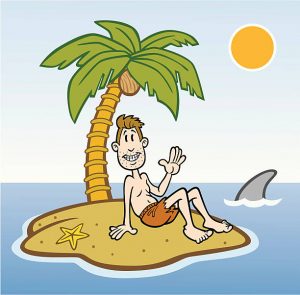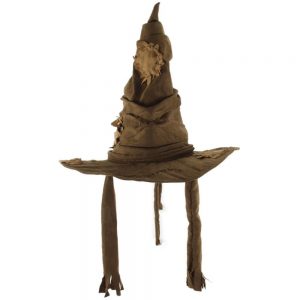I’d like to take a moment rant about a particular pet peeve of mine, which involves the seemingly-dull subject of species common names. As you may have learned in biology class, all identified and described species are assigned a Latin scientific name, which is intended to be a universal identifier of that species regardless of where it’s coming up in conversation. However, scientific names are not typically very familiar to non-scientists, so common names remain the most, well, common way to refer to a species.
Category: Conservation
One of the most common questions I get during my “ask me anything” sessions on twitter is “which species of sharks are the most endangered?” Whenever I can’t completely answer a question in a single tweet, I like to link to more information from a reliable source.
However, I’ve struggled to easily answer this question with a link, because much of the information out there about this particular question is incomplete, misleading, or just wrong. Several online lists of the most endangered species of sharks* don’t actually include the most endangered species of sharks. Many of these lists could be re-titled as “the conservation status of some species of sharks I’ve heard of and could easily find pictures of” or “some random information I heard out of context about shark conservation.” Since there isn’t an easily accessible source of accurate information about this important shark science and conservation topic, I’ll make one myself. ( I should note here that I am referring only to true sharks, not to other chondrichthyans, even though other chondrichthyans in many cases face similar or worse threats. )
Read More “A scientifically accurate list of the most endangered sharks in the world” »
 Carlotta Leon Guerrero is a former Member of the 23rd, 24th, and 25th Guam Senate. She was also a two-term president of the Association of Pacific Island Legislatures and previously worked as a radio and television journalist in Guam and the Northern Mariana Islands.
Carlotta Leon Guerrero is a former Member of the 23rd, 24th, and 25th Guam Senate. She was also a two-term president of the Association of Pacific Island Legislatures and previously worked as a radio and television journalist in Guam and the Northern Mariana Islands.
In April 2017, President Donald Trump ordered Secretary of Interior Ryan Zinke to examine 27 protected areas established by Presidents Bill Clinton, George W. Bush, and Barack Obama using the 1906 Antiquities Act. Included in the list were four marine monuments in the Pacific Ocean, the Papahanaumokuakea Marine National Monument in Hawaii, Mariana Trench Marine National Monument in the Mariana Islands, Rose Atoll Marine National Monument in American Samoa, and the Pacific Remote Islands Marine National Monument (sometimes referred to as Pacific Remote Island Areas or PRIA), which is made up several isolated islands and atolls under American control. This should have all of us on Guam and in the Pacific concerned, because we are the people who will have to live with the outcome.
In the UK, there is a famous and long-running radio show called Desert Island Discs. On this show celebrities are asked to imagine that they are marooned on a desert island, but they have rescued 10 discs (mp3s I suppose these days…) of songs that they have rescued from their sinking ship to keep them company on the desert island.
clipart credit: istock.com
My chum – marine mammal scientist and general ocean hero – Asha De Vos recently asked for a list of key papers in marine conservation that she could pass onto students working on marine conservation issues in Sri Lanka. So I decided to write up my top ten “desert island” marine conservation papers that I think have been influential, and that all marine conservation students should read.
So after much pondering, this is my list:
Read More “Desert island discs – the marine conservation edition” »
The Hogwarts Sorting Hat divides students into their respective houses in their first year at the school of witchcraft and wizardry. Each house is known for having its own “personality.” In addition to potential wizards/witches, one can also sort those involved in conservation into the four Hogwarts houses.
- Hufflepuff – This house stands for dedication and hard work, but also patience, tolerance, fair play and kindness. Most conservationists working in NGOs, especially those related to protection of megafauna species, are Hufflepuffs. One famous Hufflepuff was Newton Scamander, a socially awkward wizard who took it upon himself to try to save endangered magical creatures, when others just saw them as pests. Most of the herbology teachers at Hogwarts were Hufflepuffs (Neville Longbottom being a notable exception).
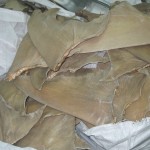
The United States Congress is considering a nationwide ban on buying, selling, or trading shark fins. While several of my posts and tweets have briefly discussed my stance on such policies, I’ve never laid out my full argument in one post. Here is why I, as a shark conservation biologist, oppose banning the shark fin trade within the United States. The short answer is that the US represents a tiny percentage of overall consumers of shark fin, but provide some of the most sustainably caught sharks on Earth, as well as important examples of successful management, to the world. This means that banning the US shark fin trade won’t reduce total shark mortality by very much, but will remove an important example of fins coming from a well-managed fishery while also hurting American fishermen who follow the rules. Also, a focus on these policies promotes the incorrect belief that shark fin soup is the only significant threat to sharks, and that addressing the tiny part of that problem locally represents the end of all threats. For the longer answer, read on. And for the case for shark fin bans, please see this guest post from Oceana scientist Mariah Pfleger.
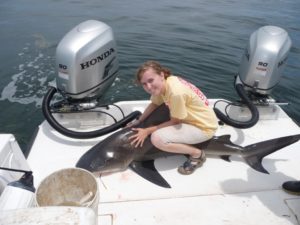 Mariah Pfleger is a marine scientist at Oceana, an international marine conservation non-profit, advising both the responsible fishing and sharks campaigns. She graduated from Florida State University in 2012 where she studied coastal sharks and their relatives. In 2016 she earned her Master’s degree from the University of West Florida where she researched both coastal and deep-water sharks and rays. Mariah worked for 3 years as a field assistant, and during her Master’s an additional 3 years as a field manager, on the Gulf of Mexico Shark Pupping and Nursery Program. She has also conducted research using environmental DNA to detect rare and endangered sturgeon. Her twitter handle is @MariahPfleger.
Mariah Pfleger is a marine scientist at Oceana, an international marine conservation non-profit, advising both the responsible fishing and sharks campaigns. She graduated from Florida State University in 2012 where she studied coastal sharks and their relatives. In 2016 she earned her Master’s degree from the University of West Florida where she researched both coastal and deep-water sharks and rays. Mariah worked for 3 years as a field assistant, and during her Master’s an additional 3 years as a field manager, on the Gulf of Mexico Shark Pupping and Nursery Program. She has also conducted research using environmental DNA to detect rare and endangered sturgeon. Her twitter handle is @MariahPfleger.
The demand for shark fins is widely recognized as one of the major contributors to shark mortality around the world. However, solutions to decrease this demand are hotly debated, especially in the scientific community. Southern Fried Science and other websites have published opinions that debate the effectiveness of shark fin bans, but as a shark scientist working to implement this policy I would like to present the case for shark fin trade bans.
The conversation is newly relevant with the introduction of the Shark Fin Trade Elimination Act in the Senate on March 30th by Senators Cory Booker (D-NJ) and Shelly Moore-Capito (R-WV) and in the House on March 9th by Representatives Ed Royce (R-CA) and Gregorio Kilili Camacho Sablan (I-MP). If passed, the bill would ban the buying and selling of shark fins in the United States – thereby removing the United States from the global shark fin trade altogether. The bill is championed by Oceana, where I work as the scientist on the sharks campaign.
The demand for fins fuels finning – the act of slicing off a shark’s fins and dumping the body back into the ocean. The United States recognized this practice was a problem and implemented the Shark Finning Prohibition Act of 2000 followed by the Shark Conservation Act (SCA) in 2010, which required that all sharks must be landed with their fins naturally attached (except for smooth dogfish, which can be landed under a fin-to-carcass ratio). However, according to the National Marine Fisheries Service, the United States is still importing fins from places like Hong Kong, China, New Zealand, the Netherlands, Spain, South Africa and Indonesia, to name a few. Not all of these countries have anti-finning laws, which means that the United States may be, and likely is, purchasing fins from finned sharks. Once in the United States market, there is no way to tell whether a fin came from a finned shark or not. By purchasing these fins, the United States is sustaining the demand for this unsustainable practice.
Executive Order 13777 created a Regulatory Reform Task Force to oversee the evaluation of existing regulations to make recommendations about potential repeal, replacement, or modification to the Environmental Protection Agency. The dissolution of the EPA would be catastrophic for this country. Fortunately, the wheels of bureaucracy turn slowly, and before any recommendations are formally issued, … Read More “The time to defend the EPA is now!” »
Invasive species, overfishing, ocean plastics, wildlife tracking, and measuring ecosystem services, are some of the most daunting challenges in conservation.While these challenges require a combination of social, commercial, and regulatory cooperation to address, they can also be tackled through technological innovation, which can bypass some of the largest hurdles to implementing practical, timely solutions.
On April 21, 2017, 18 teams of conservationists, technologists, makers, and hardware hackers will gather in Washington DC and tackle five conservation challenges selected by a panel of experts at the Make for the Planet, part of the Smithsonian’s Earth Optimism Summit. Over three days, teams will work to develop prototypes, strategic frameworks, and model systems that address specific issues within the broader challenge prompt of terrestrial species invasion, overfishing, ocean plastics, wildlife tracking, and ecosystem services.
Read More “Make for the Planet with Conservation X Labs and the Earth Optimism Summit!” »
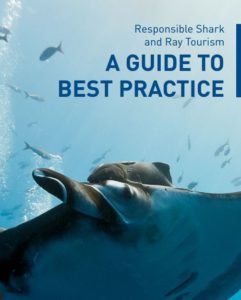 Shark wildlife tourism* is a growing marine industry with big implications for shark conservation. While there are many competing definitions, generally shark wildlife tourism refers to SCUBA dive operators who offer trips that guarantee that you’ll see sharks, often through the use of bait or chum to attract sharks to the divers. This has become a contentious issue in marine science and conservation circles. That’s why last week’s news that WWF, Project AWARE, and the Manta Trust released the first-ever guide to responsible shark and ray tourism best practices is so welcome. This thorough and well-researched guide guide is designed for dive operators who want to minimize their potential harm to sharks and rays while maximizing the potential conservation benefits of shark wildlife tourism.
Shark wildlife tourism* is a growing marine industry with big implications for shark conservation. While there are many competing definitions, generally shark wildlife tourism refers to SCUBA dive operators who offer trips that guarantee that you’ll see sharks, often through the use of bait or chum to attract sharks to the divers. This has become a contentious issue in marine science and conservation circles. That’s why last week’s news that WWF, Project AWARE, and the Manta Trust released the first-ever guide to responsible shark and ray tourism best practices is so welcome. This thorough and well-researched guide guide is designed for dive operators who want to minimize their potential harm to sharks and rays while maximizing the potential conservation benefits of shark wildlife tourism.
